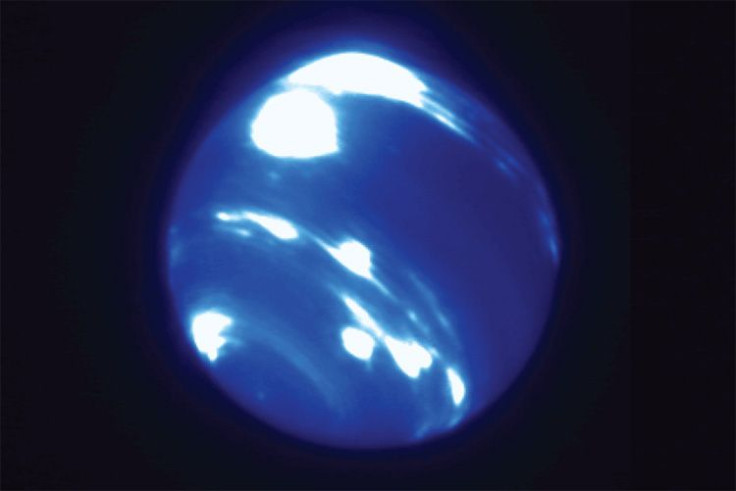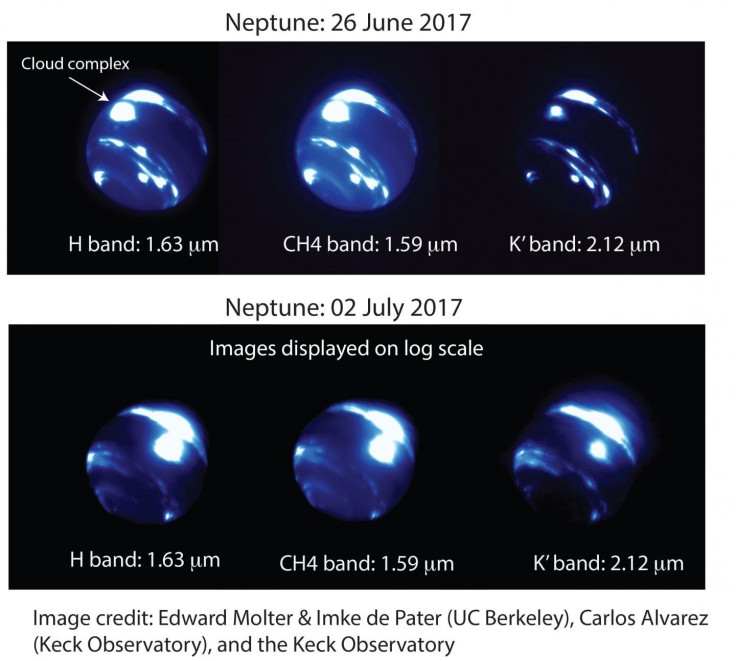Massive Neptune Storm System First-Ever Seen Around Equator, Observed During Twilight

In two firsts, a massive storm system was seen around Neptune’s equator, with the observation being made at dawn. It was the first time a storm of such size was seen at such low latitudes on the solar system’s outermost planet, and it was also the first time that such an observation was made during hours when it wasn’t completely dark outside.
The gigantic storm system is about 9,000 kilometers (5,600 miles) in length, which is about a third of Neptune’s radius (for context, the longest distance between the east and west coasts in the United States is 2,900 miles). The storm, which was seen getting brighter between June 26 and July 2, also saddled at least 30 degrees in both latitude and longitude of the planet.
“Seeing a storm this bright at such a low latitude is extremely surprising. Normally, this area is really quiet and we only see bright clouds in the mid-latitude bands, so to have such an enormous cloud sitting right at the equator is spectacular,” Ned Molter, a graduate student of astronomy at University of California, Berkeley, who first spotted the storm complex, said in a statement on the university’s website Thursday.
Read: NASA’s Mission Concept To Study Uranus, Neptune
Initially, Imke de Pater, a professor in the university’s astronomy department and Molter’s advisor, thought the storm complex was the same as seen by the Hubble Space Telescope over 20 years ago. The Northern Cloud Complex had been observed in 1994, but da Peter soon realized that the measurements of the two observations don’t match.
The storm system, which is almost as large as Earth, could be caused by “a huge, high-pressure, dark vortex system anchored deep in Neptune’s atmosphere,” according to a statement issued by the observatory.

The clouds that make the storm on Neptune are likely composed of methane, which cools as it rises in a vortex and then condenses into clouds, the same way water clouds form on Earth. But these clouds on Neptune straddle many layers of the planet’s atmosphere and are probably held together by a large dark vortex. If not tied to a vortex, the storm could be a massive convective cloud, the kinds of which have been seen before on other planets, such as on Saturn in 2010. But that would also mean the storm should have likely “smeared out considerably” in the course of one week.
“This big vortex is sitting in a region where the air, overall, is subsiding rather than rising. Moreover, a long-lasting vortex right at the equator would be hard to explain physically. … This shows that there are extremely drastic changes in the dynamics of Neptune’s atmosphere, and perhaps this is a seasonal weather event that may happen every few decades or so,” de Pater said in the observatory’s statement.
Read: Primitive Atmosphere Of Hydrogen, Helium Found Around “Warm Neptune” Exoplanet
Molter made the unusual observation near Neptune’s equator during a dawn test run of twilight observing at W. M. Keck Observatory on Maunakea, Hawaii. He was one of the eight scholars who was accepted into the first Keck Visiting Scholars Program, which intends to give observation time to graduate students and post-doctoral researchers. Molter wanted to show that some bright objects don’t require the darkness of night to be observed, and his assignment was to come up with an observation method that uses the twilight time for observation.
Referring to Anne Kinney, chief scientist at Keck Observatory, da Pater said in the university statement: “Ned had never observed before, and he’s very bright, so when Anne told me about the program, I knew he would be the perfect student for it. Now that we’ve discovered this interesting cloud complex in Neptune, Ned has a running start on a nice paper for his Ph.D. thesis.”
Neptune has winds of up to 1,000 miles an hour, making it the windiest planet in the solar system, given current observations. Some of the fastest hurricanes on Earth have wind speeds of under 160 miles an hour and the speed of sound at sea level is about 760 miles per hour.
© Copyright IBTimes 2024. All rights reserved.











